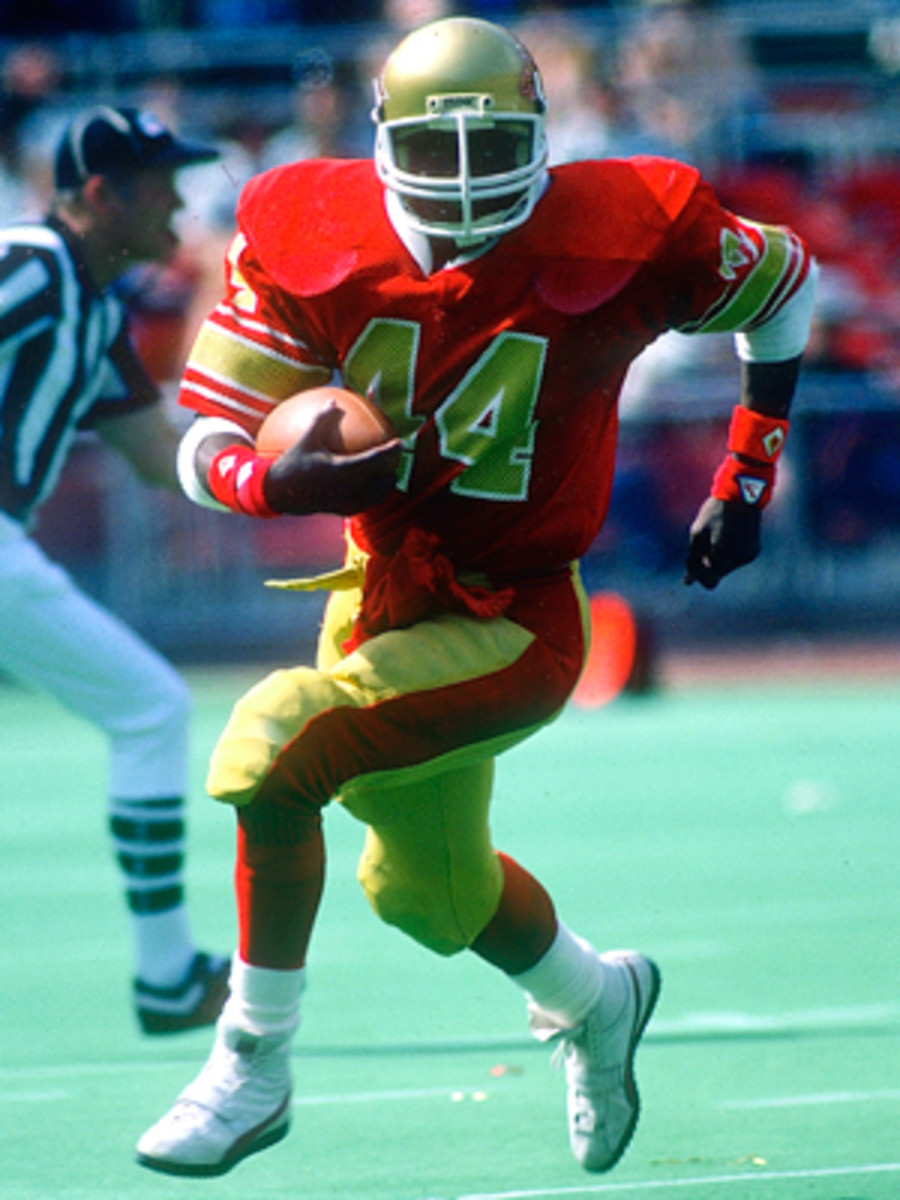The dominant Stars of the USFL: Pro football's forgotten dynasty

Myles Tanenbaum could only sit and watch the USFL crumble around him in 1986. Despite being the last of the league’s original owners still standing and the proprietor of the USFL’s two-time defending champion Baltimore Stars, Tanenbaum was a prisoner to New Jersey Generals owner Donald Trump’s ill-advised attempt to paint the NFL into a corner and force a merger between the two leagues, thus realizing Trump’s long-sought ownership of an NFL franchise.
Of all the USFL teams, the Stars likely would have most benefitted from an NFL merger. Coach Jim Mora’s club boasted a championship pedigree and played just outside the heartbroken city of Baltimore, where the wounds from Jim Irsay shuttling the Colts to Indianapolis in March 1984 were still fresh. The Stars were just one of three teams to vote against Trump’s proposed plan to challenge the NFL. As a result, the USFL and the Stars ultimately dissolved about as quickly as the Colts vanished into the night.
• SI LONGFORM: End of the USFL—The strange finale of the upstart league
Time hasn’t been kind to the Stars, “one of the greatest teams that a lot of people don’t remember,” in the words of former tight end Ken Dunek. General manager Carl Peterson went as far as to call the Stars “the greatest football team that no one’s ever heard of.”
Even today’s most impassioned football fans would be hard pressed to remember the Stars’s three years of dominance, during which they reached the USFL title game each season and failed by just two points—a 24–22 loss to the Michigan Panthers in 1983—to sweep the league’s championships.
SI Vault: So Long, USFL—Now What? Stars off to NFL, others in limbo
Few remember that the Stars never failed to transcend the team’s murky circumstances. They butted heads with both the Philadelphia Phillies and Eagles as co-tenants of Veterans Stadium for the 1983 and ’84 seasons, and were ultimately forced to play the ’84 playoffs at the University of Pennsylvania’s cozy Franklin Field after averaging 24,000 fans for home games at the Vet.
Few know that Stars QB Chuck Fusina led Penn State to an 11–1 record in both 1977 and '78—his junior and senior seasons—carrying the team to the Fiesta Bowl and the Sugar Bowl, respectively, those years. Fusina was also the runner's up in the Heisman Trophy race as a senior, with Billy Sims winning the honor.
“Chuck Fusina really doesn’t look like a magnificent, first-string, top of the line, quarterback,” Joe Paterno once told Peterson. “Chuck doesn’t even really look good in his uniform. But he does the one thing that keeps you and I employed: He wins.”

Few recognize RB Kelvin Bryant’s historical dominance. The 1983 USFL MVP, Bryant was the league’s second-leading rusher behind only Herschel Walker, having gained 4,055 yards rushing in three seasons. The Philadelphia crowd danced to the Hawaii Five-0 theme song following each of his gallops into the end zone. Only injuries prevented him from ascending to NFL stardom.
“Kelvin Bryant was one of the most important players in the USFL,” said Stars public relationship director Bob Moore. “He was something special in the open field.”
Few acknowledge the Stars’ stifling, self-dubbed Doghouse Defense, which ranked first in points against and second in yards allowed, according to defensive coordinator Vince Tobin.
And few remember just how quickly the city of Brotherly Love embraced the motley crew of football misfits as their own, a happy alternative to the perennially dilapidated Eagles.
“When you think about it,” Dunek says. “The Stars are still the last professional football champion in Philadelphia.”
